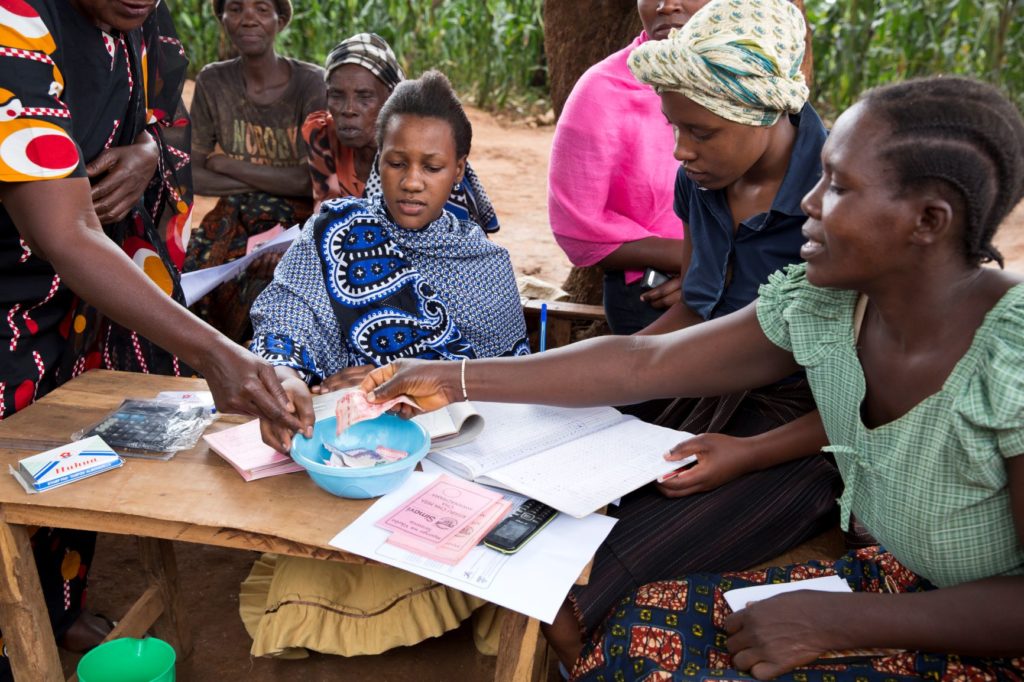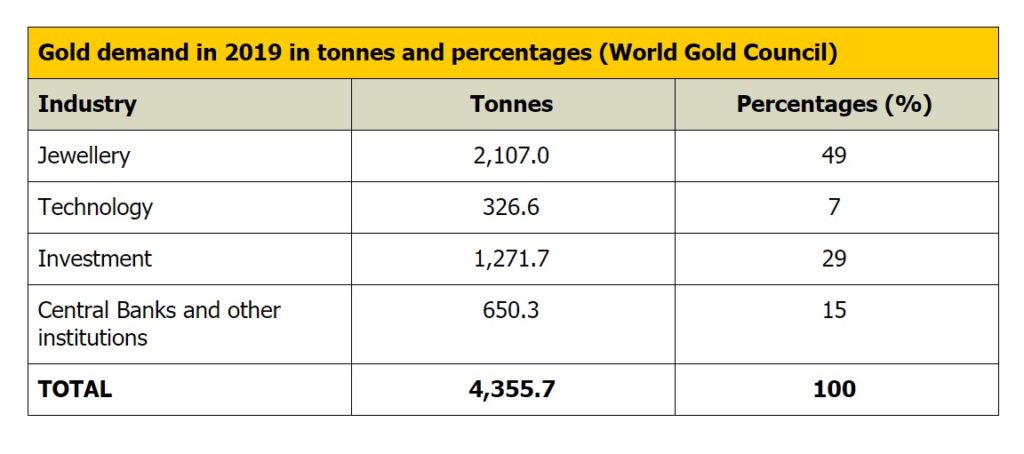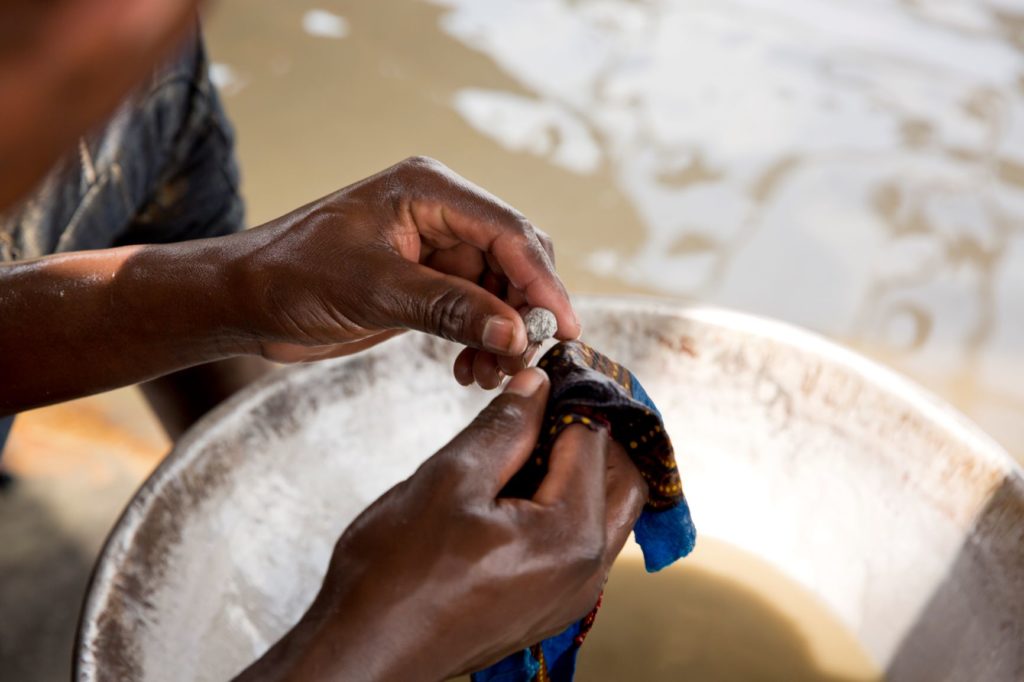Our blog series is based on a recent research report commissioned by Solidaridad and carried out by the Global Initiative against Transnational Organized Crime; and on our cooperation with TDI Sustainability, a sustainability advisory firm which has recently carried out research in this field as well. In this fifth blog article, we look at the engagement of the jewellery sector with ASM gold as well as their role in ensuring women empowerment in the gold supply chain.

Demand for and engagement with ASM gold
Jewellery companies are amongst the so-called end-buyers in the gold market and were responsible for 49% of the global gold demand in 2019. Other large end-buyers are the financial sector (44% in 2019) and the technology industry (7% in 2019). It is remarkable that although the financial sector was responsible for nearly half of the total gold demand in 2019, stakeholders in this sector do not show any sign of engagement with ASM gold. This is in stark contrast with the electronics industry, where we can find several encouraging examples of engagement.

Storytelling in the jewellery store
In recent years we have seen an increasing demand amongst jewellers for responsibly sourced ASM gold. Jewellers report that this is not so much the result of direct demand from consumers for responsible gold, but rather an increasing interest in a story to come with the purchase. Responsibly sourced ASM gold hereby provides jewellers with a story to tell.
A good example of the power of storytelling is given by Chopard. This brand has already been actively committed to sourcing responsible ASM gold for years. Since July 2018, Chopard has been using 100% ethical gold for the crafting of its watches and jewellery.
Nevertheless, engaging with ASM gold brings some risks for the jewellers. Their main concern is reputational risk, as being associated with human rights violations or environmental harms is very damaging for their brand reputation.

Strengthening the ASM gold business case
In contrast to the refiners, which were discussed in our previous blog, jewellery companies can easily absorb the extra costs currently associated with sourcing responsible ASM gold, because jewellery prices are more determined by brand and design than by the commodity prices. In our joint research with The Global Initiative, jewellers have indicated that telling the origin story of the gold outweighs the extra costs.
However, jewellers that have engaged directly with ASM gold miners found the barriers for engagement and associated costs higher than expected. They mention difficulties in obtaining correct export licenses, being able to open bank accounts with reputable international banks, and high costs of ongoing due diligence. On the latter point there were mixed thoughts, as some jewellers also indicated that the costs of social audits are low compared to other operational costs, such as financial audits.
The following quote by one of the jewellers illustrates well how the business case for engagement with ASM gold can be strengthened: “If you can track gold and marry it with monitoring and evaluation data, you have something that can be branded… you have a story to sell.”

Telling the story of powerful women
If we look at the current brand communication by jewellery companies on sustainability in general and responsible materials in particular, we see a lot of focus on the vulnerable position of women in society and in the supply chain.
A very strong example is provided by Signet, a New York Stock Exchange listed jewellery company. In August 2019, their CEO emphasized the importance of female empowerment in the jewellery supply chain, hereby announcing that Signet will catalog and audit existing supplier relationships and ensure that it maintains a supply chain that respects and empowers women at all levels.
Signet is also one of the companies that signed the Gender Stakeholder Statement developed by Women’s Rights and Mining in cooperation with the OECD. The statement calls upon private sector actors, amongst others, to implement gender-responsive due diligence in mineral supply chains by identifying, assessing, preventing, mitigating and accounting for the ways in which actions may affect men and women differently, both in the workplace and the surrounding communities. You can read more about it in our blog article.
Solidaridad’s Golden Line programme (in cooperation with Simavi and Healthy Entrepreneurs) demonstrates that in addition to ensuring that women in the ASM gold sector are protected, it is equally or even more important to help unlock their (economic) power. Around half of the people who work in the ASM gold sector are women, and statistics show that they are more likely to pay back their loans compared to men. In light of the recent International Women’s Day, the Golden Line programme was featured in an article on Ghana News Agency, calling upon stakeholders in the mining sector to tackle gender inequality in the sector through active interventions.
Inclusivity, therefore, is not only a social responsibility but also offers a smart strategy for jewellery companies and other stakeholders looking to engage with ASM gold. And marrying the story of economic empowerment of women in ASM gold with the women who wear the jewellery is an excellent selling point.
Interested in our ASM gold blog series? Have a(nother) look at the first blog.
Read more about Solidaridad’s work in gold.
